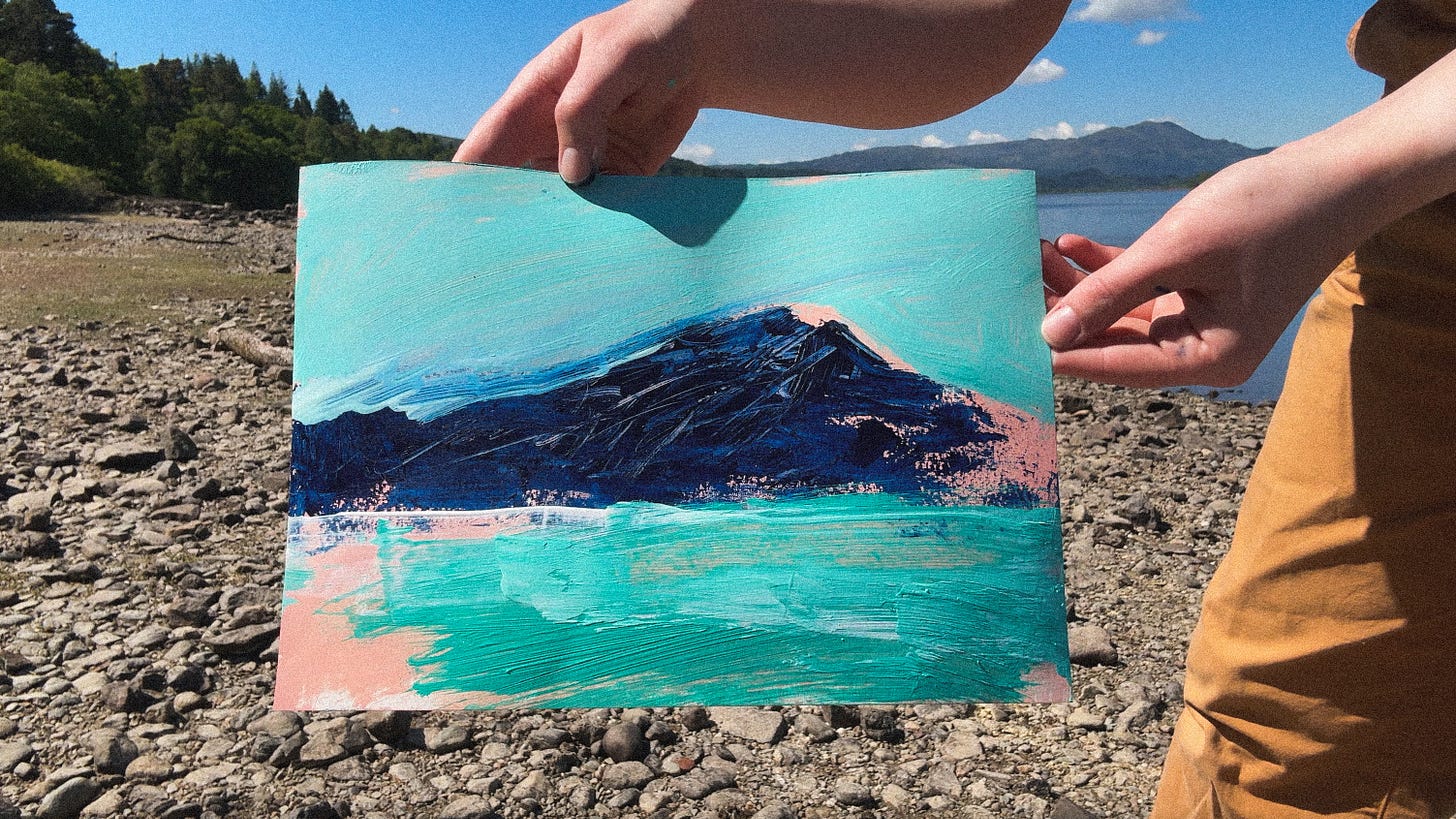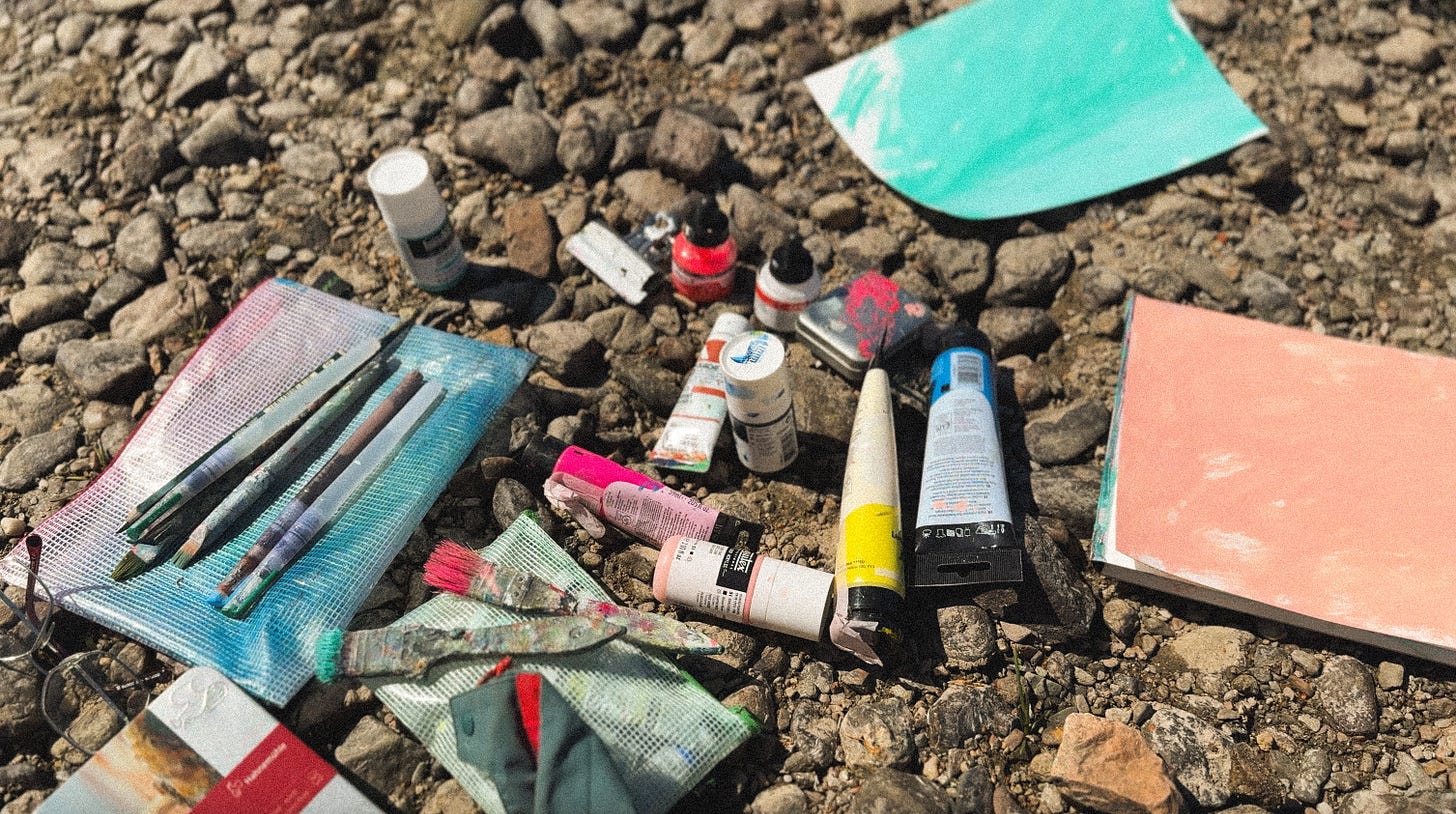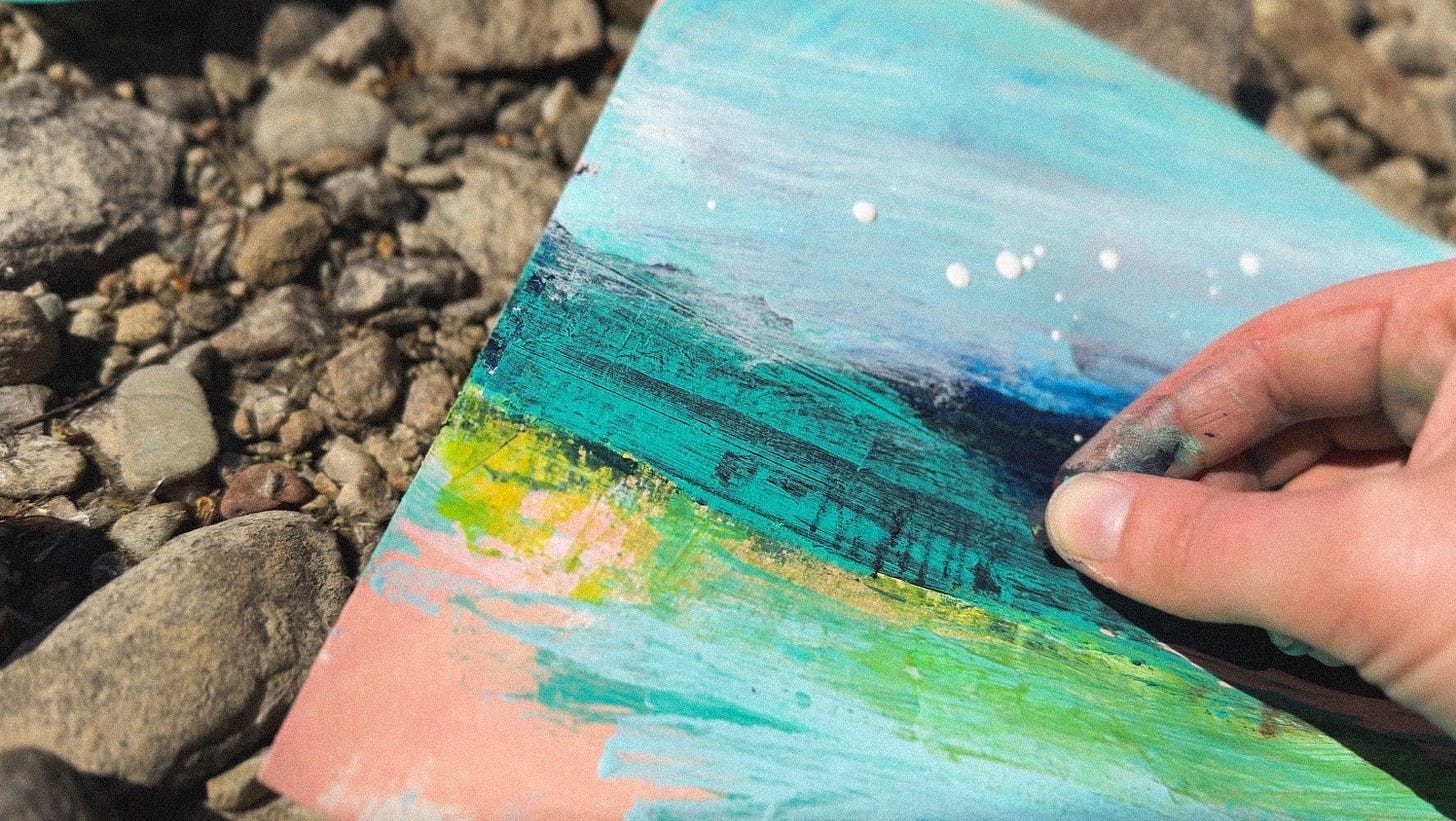Hello!
This week I’ve created a video sharing a painting adventure by one of my FAVOURITE lochs. The only way this day could have been better is if I had remembered my factor 50 sunscreen & snacks (sorry arms).
I wanted to break down the two points I shared in my latest youtube video (watch below) for you to have as note form, if you’d ever like to paint landscapes but feel a little lost at where to start.
This sense of overwhelm / too much inspiration is what I hear so so often from folks wanting to start or get back into painting landscapes - and I totally get it. When you’re trying to celebrate a place you love, a) how do you do it justice, b) where do you start and c) how do you capture it all?! (answer to c): you don’t need to!)
How to start simplifying a landscape
Ok, so we have our photo / we’re outside looking at a view. The first thing we’re going to do is simplify the landscape down into basic shapes!
Try squinting your eyes and looking at the view; what main shapes can you see?
Block these areas out with colours. The colours here (if it feels comfortable to think about) can match the values you can spot (the lights & darks) to help bring definition to your painting.
Working in to your painting
Now we have our basic shapes & structure, it’s time for the middle stage; layer layer layer!
In this step, we want to bring in ✨texture✨ to help our shapes feel less flat or 2d. Get experimenting with all sorts of tools here; the ends of your paint tubes, sticks, scraper tools, paint nozzles - anything you can think of! Get creative with it.
Also, let me know what your favourite way to make textures are right now, I’d love to know :)
Extra tip: When I’m adding these layers of textures, I’m adding them as glazes; so I can see through to the base. I’m often adding, scraping into / back in this step, so that the texture builds into my base shapes like a wash.
Details
When adding the details, I try not to go crazy here. Yes, there’s so much beauty to inspire us, but no, let’s not try capture it all at once. Doing this can bring that sense of tightening up, of feeling worried about getting it right, and might make the piece confusing.
Instead, let’s focus on just 2-3 details we spot in the landscape to bring a little nod to where we are. Go with your gut when choosing these details; what do you notice first in the landscape? Add these as your details; drawing attention to these focuses.
Extra tip: We don’t need to add details representationally/realistically (unless you want to of course!): what if we gestured to that detail instead? How might we draw a path loosely, add a mark that represents the tree we love, or a texture to indicate the glimmer of water?
Demonstrations
You can check out these ideas in action in my latest youtube video here:
& if you’re looking to keep exploring nature in your art or learn to paint loosely, I’d love to invite you to check out our art membership The Outdoor Sketchbook Collective! There’s a whole host of video tutorials, workshop recordings and a ton of other resources on the platform to check out, as well as a lovely group of folks to hang out with. Come say hi!
As always, thanks for reading and watching, I hope these ideas help you with your creativity and get exploring landscapes that are meaningful to you. And if you’re working outside, don’t be like me, and remember your sunscreen!
Orla ☀️










It's so inspiring to see your process and the freedom with which you paint. There are so many ways to interpret the same scene and I love how all of the pieces you created turned out so beautifully different!
What great advice! I'm not a painter, but I weave and play with textiles. Always feel daunted looking at landscapes, but this has inspired me! Thank you!